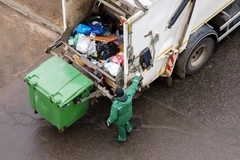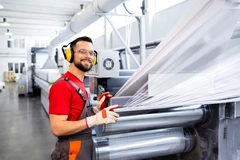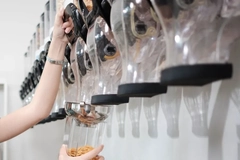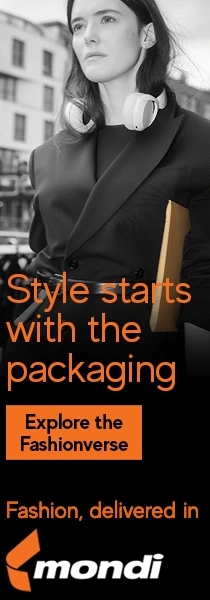Frozen food packaging: Following legislative changes with banding and fiber innovations
Frozen food packaging presents producers with particular environmental and design problems. As the legislative landscape changes and consumer demands increase, packaging companies are employing new methods to improve their practices.
According to packaging industry analyst Neil Farmer, the frozen food sector is worth roughly US$800 million and growing at a rate of 4% annually.
“The busy schedules of modern consumers, the need for instant meals, the growing demand for convenience food and changed eating habits are all increasing the demand for frozen food packaging. The need to enhance food safety and extend shelf life are key factors in designing frozen food packaging to meet the demands of the current market,” he explains.
“Manufacturers are moving more toward investing in more sustainable solutions, use of improved material to protect food items and premium quality substrates, including high quality paper. Microwave safe and oven-safe packaging are allowing consumers to cook frozen meals directly in the packaging, saving time and money as a result.”
We speak to stakeholders from ATS-Tanner, Mondi and Metsä Board about their latest frozen food packaging solutions, the challenges they are facing and what we can expect to see over the coming year.
Branding and banding  ATS-Tanner frozen food banding.Donatella Bello Fernández, business developer at ATS-Tanner, tells us that most frozen food multipacks are held together with shrink-wrapping film, either for promotions at the point of sale or as intralogistics units for internal transportation.
ATS-Tanner frozen food banding.Donatella Bello Fernández, business developer at ATS-Tanner, tells us that most frozen food multipacks are held together with shrink-wrapping film, either for promotions at the point of sale or as intralogistics units for internal transportation.
“Usually additional adhesives are needed for unit information. Banding is an environmentally friendly packaging alternative. On the one hand, it reduces packaging to a minimum, and on the other, it reduces the energy consumption by up to 98% compared to shrink wrapping,” Fernández explains.
“The heat generated by shrink wrapping builds up in the rooms, so air conditioners are often used to achieve comfortable temperatures for employees. This results in additional costs and unnecessary environmental pollution.”
ATS-Tanner does not use adhesives to attach labels to the products. Instead, it uses tension to wrap labels around products and then secures the label to itself using an ultrasonic weld.
“The big advantage of banding compared to conventional packaging is that banding material is made from high-quality monomaterial, and our FSW with matte lamination ensures that the stacked products don’t stick together in the freezing environment,” says Fernández.
FSW is a silk-matt banding film made of 100% PP, which delivers print images in flexographic printing.
Frozen fibers
Fiber-based solutions are a growing part of the frozen packaging sector. Ritva Mönkäre, communications manager at Metsä Board, explains that the company’s paperboard options for frozen items include folding box boards and white kraft liners.
Mönkäre tells Packaging Insights that these products face much of the same environmental problems as other paper-based packaging designs.
“Paperboard is an excellent material for the circular economy. It is made primarily from renewable wood fiber, and it is a recyclable material with a high recycling rate. However, not all paperboard or paper is recycled due to, for example, inadequate sorting, contamination or fiber degradation. Therefore, there is a constant need for new fresh fibers to maintain the availability of fiber material,” she explains.
.jpg) Metsä Board production facility.Metsä Board’s stated goal is to achieve 100% fossil-free production and products by the end of 2030. Currently, fossil-free energy accounts for 90% of its total energy consumption.
Metsä Board production facility.Metsä Board’s stated goal is to achieve 100% fossil-free production and products by the end of 2030. Currently, fossil-free energy accounts for 90% of its total energy consumption.
Meanwhile, Mondi also produces fiber-based designs for frozen products. Falk Paulsen, sales and business development director for Consumer and Technical Packaging, Mondi Functional Paper and Films, explains that its designs are intended as a replacement for traditional plastics.
“Mondi’s FunctionalBarrier Paper offers an alternative to plastic packaging for frozen food that is made from renewable raw materials and can be recycled in existing European waste streams. It provides the necessary product protection to preserve food quality and also supports our customers’ sustainability goals by reducing plastic waste and contributing to a circular economy,” he says.
Legislative changes
With the EU’s Packaging and Packaging Waste Regulation about to be introduced, the rules for European packagers will change fundamentally. But Fernández says many companies underestimate the urgency of preparing for this far-reaching legislative change.
“While the law will soon come into force, many companies are lagging behind when it comes to developing innovative solutions,” she says.
“Those who do not adapt in time, run the risk of losing touch with sustainable standards. Despite the urgency, however, there is a lack of mature alternatives and solutions that meet the requirements. The development of new, environmentally friendly packaging solutions is complex and time-consuming, but time is of the essence.”
“Companies need to rethink now and proactively work on new packaging strategies before it is too late. Because the law will come into force even if the solutions are not in place,” continues Fernández.
“Banding reduces packaging to a minimum, it simplifies waste separation and recycling because no glue or additional labels are used. Paper bands can be recycled in established cycles and contain recycled paper.”











